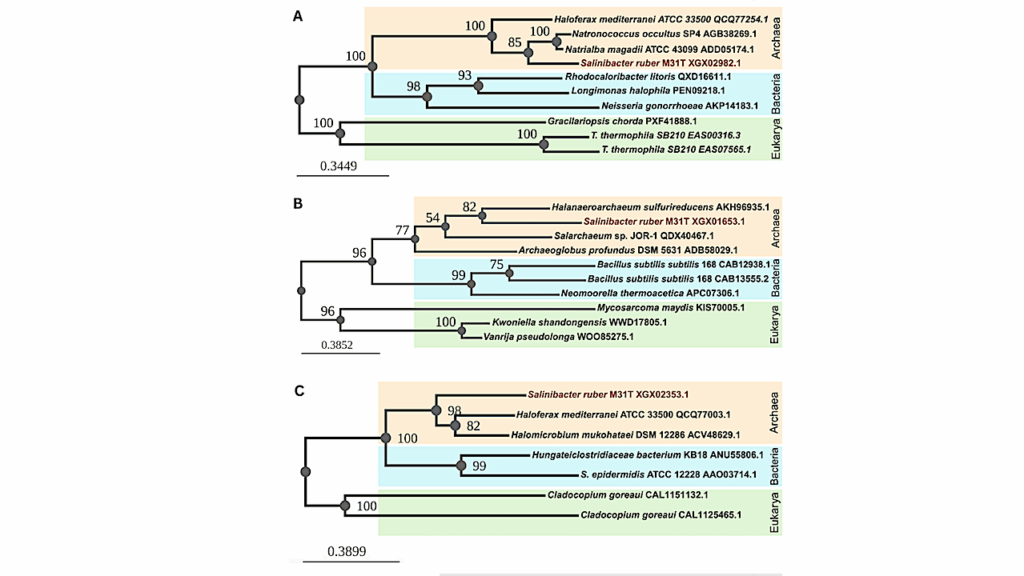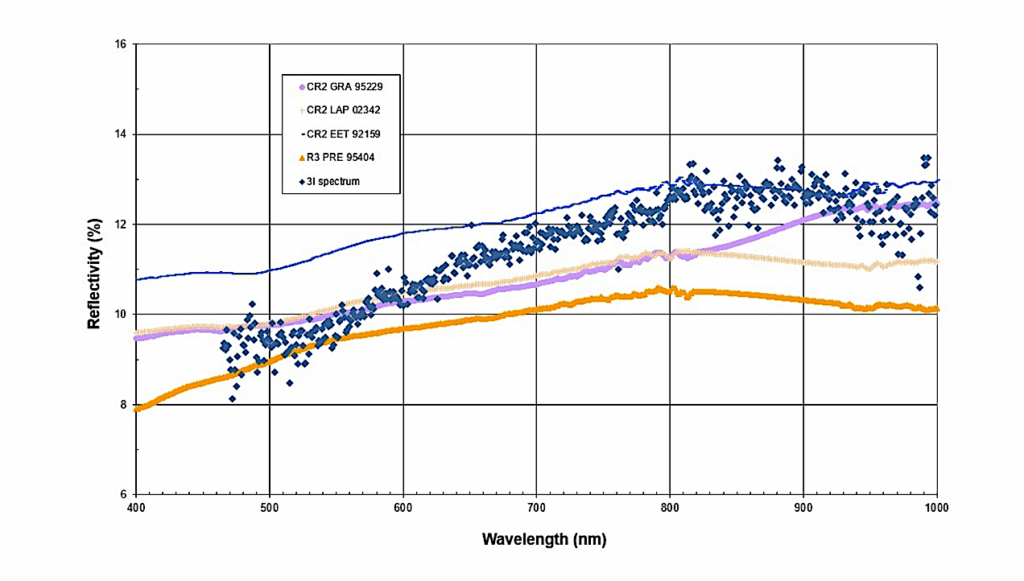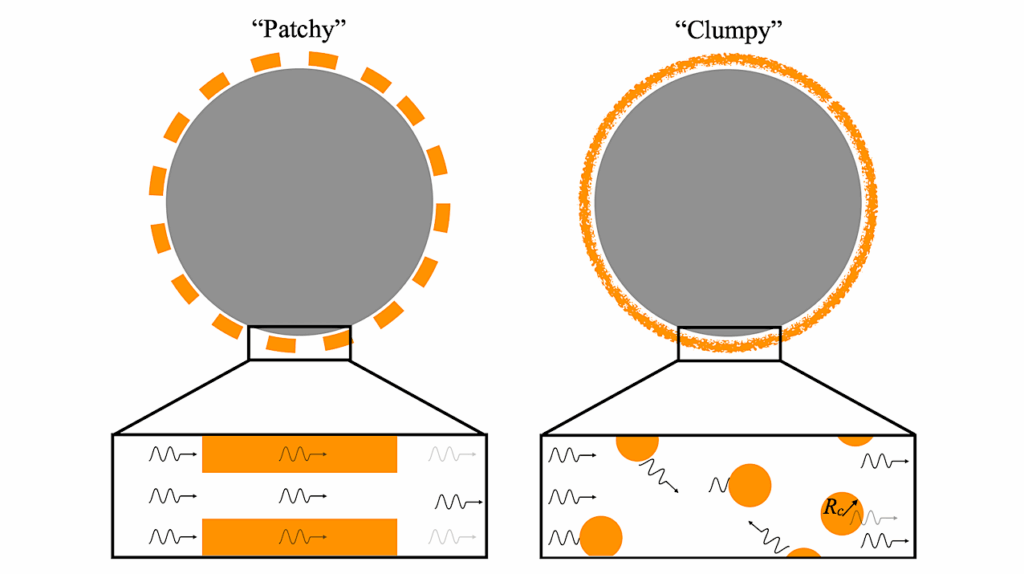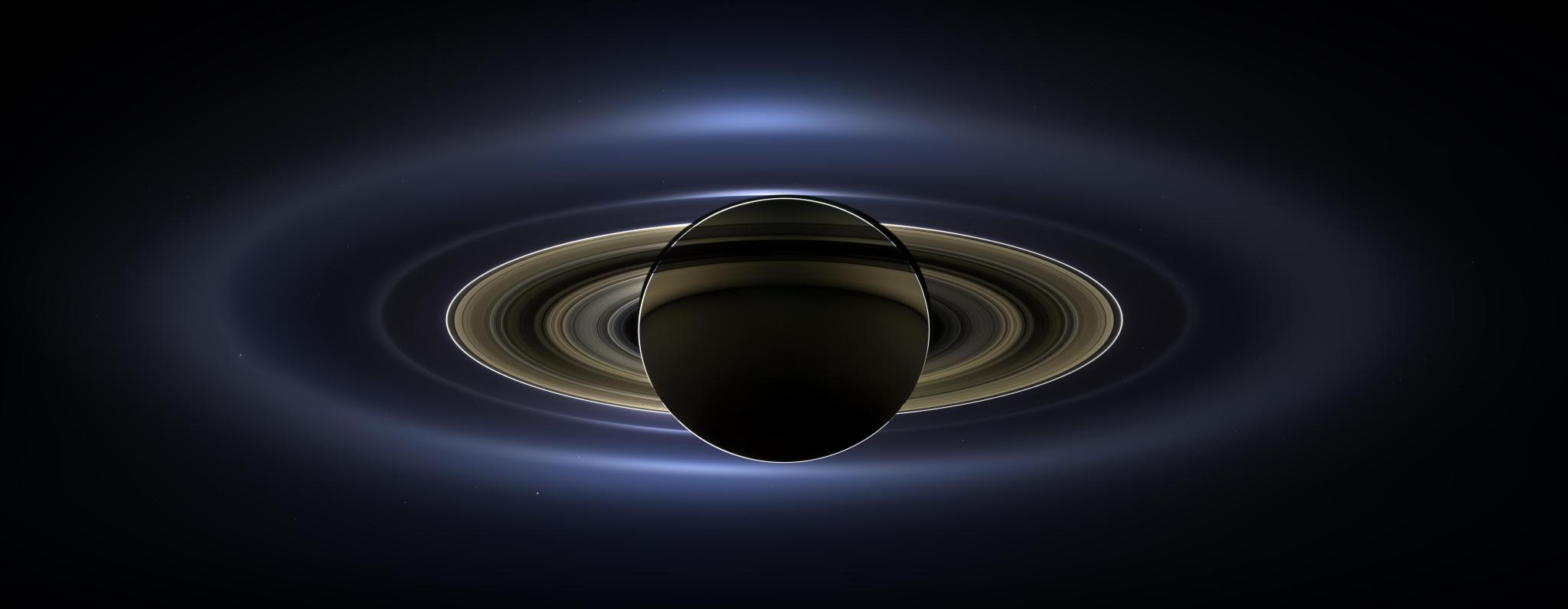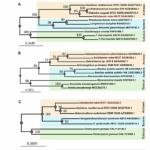Now Reading: A Newborn Planet Observed Sculpting The Dust Around It
-
01
A Newborn Planet Observed Sculpting The Dust Around It
A Newborn Planet Observed Sculpting The Dust Around It
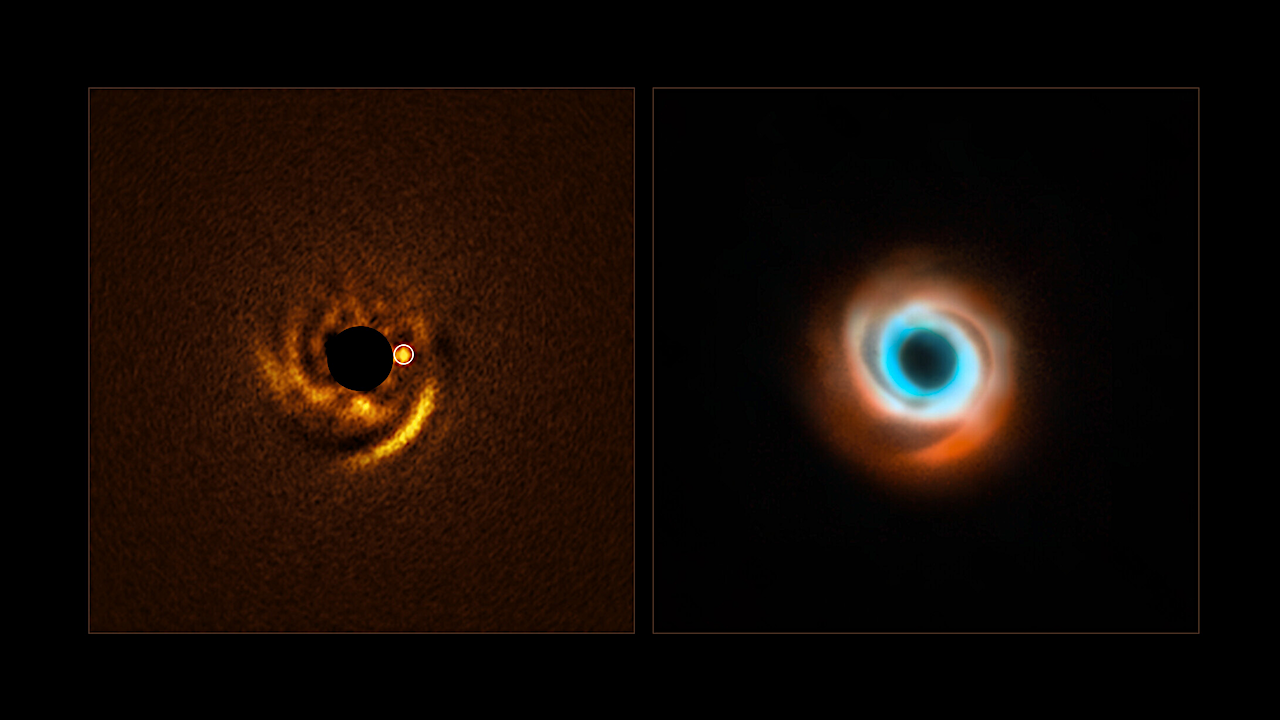
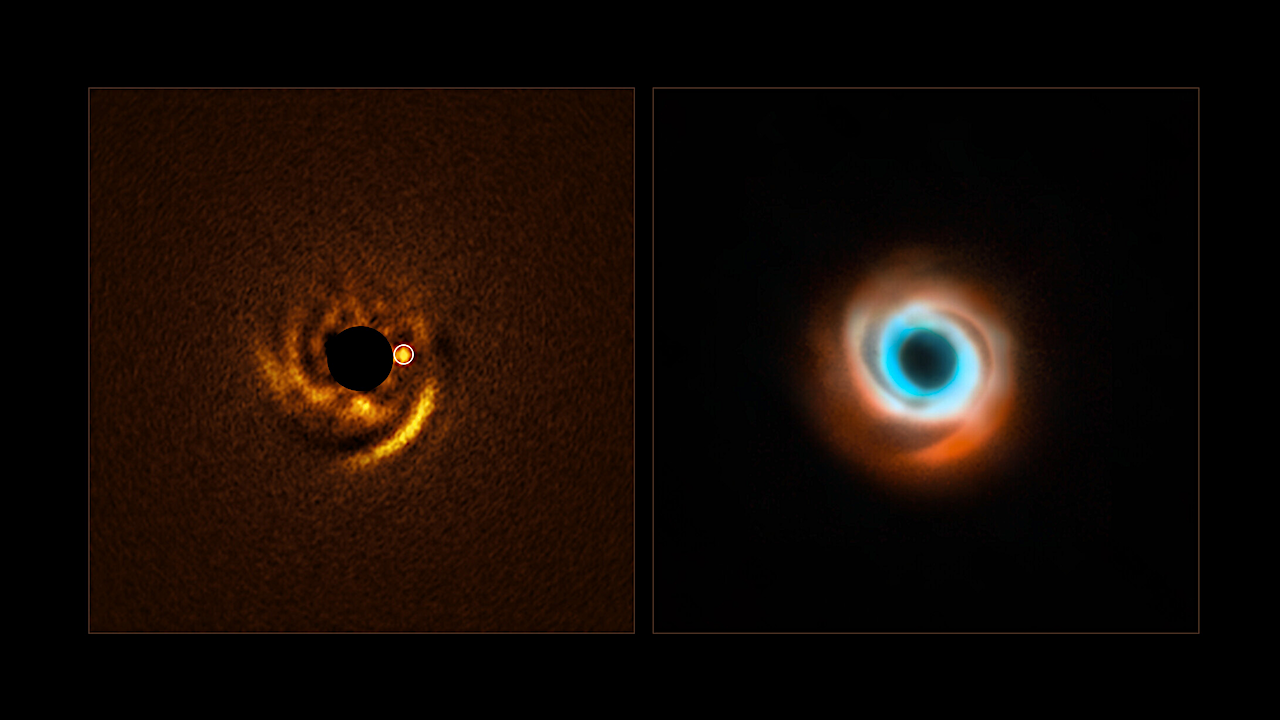
The image to the left, taken with ESO’s Very Large Telescope (VLT), shows a possible planet being born around the young star HD 135344B. This star, located around 440 light-years away, is surrounded by a disc of dust and gas with prominent spiral arms. Theory predicts that planets can sculpt spiral arms like these, and the new planet candidate is located at the base of one of the arms, just as expected. The image was captured with a new VLT instrument: the Enhanced Resolution Imager and Spectrograph (ERIS). The central black circle corresponds to a coronagraph –– a device that blocks the light of the star to reveal faint details around it. The white circle indicates the location of the planet. The image to the right is a combination of previous observations taken with the SPHERE instrument also at the VLT (red) and the Atacama Large Millimeter/submillimeter Array (ALMA, orange and blue). These and other previous studies of HD 135344B did not find signatures of a companion, but ERIS may have finally unveiled the culprit responsible for the star’s spiral disc. Credit ESO/F. Maio et al./T. Stolker et al./ ALMA (ESO/NAOJ/NRAO)/N. van der Marel et al.
Astronomers may have caught a still-forming planet in action, carving out an intricate pattern in the gas and dust that surrounds its young host star.
Using ESO’s Very Large Telescope (VLT), they observed a planetary disc with prominent spiral arms, finding clear signs of a planet nestled in its inner regions. This is the first time astronomers have detected a planet candidate embedded inside a disc spiral.
“We will never witness the formation of Earth, but here, around a young star 440 light-years away, we may be watching a planet come into existence in real time,” says Francesco Maio, a doctoral researcher at the University of Florence, Italy, and lead author of this study, published today in Astronomy & Astrophysics.
The potential planet-in-the-making was detected around the star HD 135344B, within a disc of gas and dust around it called a protoplanetary disc. The budding planet is estimated to be twice the size of Jupiter and as far from its host star as Neptune is from the Sun. It has been observed shaping its surroundings within the protoplanetary disc as it grows into a fully formed planet.
Protoplanetary discs have been observed around other young stars, and they often display intricate patterns, such as rings, gaps or spirals. Astronomers have long predicted that these structures are caused by baby planets, which sweep up material as they orbit around their parent star. But, until now, they had not caught one of these planetary sculptors in the act.
In the case of HD 135344B’s disc, swirling spiral arms had previously been detected by another team of astronomers using SPHERE (Spectro-Polarimetric High-contrast Exoplanet REsearch), an instrument on ESO’s VLT. However, none of the previous observations of this system found proof of a planet forming within the disc.
Now, with observations from the new VLT’s Enhanced Resolution Imager and Spectrograph (ERIS) instrument, the researchers say they may have found their prime suspect. The team spotted the planet candidate right at the base of one of the disc’s spiral arms, exactly where theory had predicted they might find the planet responsible for carving such a pattern.
“What makes this detection potentially a turning point is that, unlike many previous observations, we are able to directly detect the signal of the protoplanet, which is still highly embedded in the disc,” says Maio, who is based at the Arcetri Astrophysical Observatory, a centre of Italy’s National Institute for Astrophysics (INAF). “This gives us a much higher level of confidence in the planet’s existence, as we’re observing the planet’s own light.”
A star’s companion is born
A different team of astronomers have also recently used the ERIS instrument to observe another star, V960 Mon, one that is still in the very early stages of its life. In a study published on 18 July in The Astrophysical Journal Letters, the team report that they have found a companion object to this young star. The exact nature of this object remains a mystery.
The new study, led by Anuroop Dasgupta, a doctoral researcher at ESO and at the Diego Portales University in Chile, follows up observations of V960 Mon made a couple of years ago. Those observations, made with both SPHERE and the Atacama Large Millimeter/submillimeter Array (ALMA), revealed that the material orbiting V960 Mon is shaped into a series of intricate spiral arms. They also showed that the material is fragmenting, in a process known as ‘gravitational instability’, when large clumps of the material around a star contract and collapse, each with the potential to form a planet or a larger object.
“That work revealed unstable material but left open the question of what happens next. With ERIS, we set out to find any compact, luminous fragments signalling the presence of a companion in the disc — and we did,” says Dasgupta. The team found a potential companion object very near to one of the spiral arms observed with SPHERE and ALMA. The team say that this object could either be a planet in formation, or a ‘brown dwarf’ — an object bigger than a planet that didn’t gain enough mass to shine as a star.
If confirmed, this companion object may be the first clear detection of a planet or brown dwarf forming by gravitational instability.
Unveiling a protoplanet candidate embedded in the HD 135344B disk with VLT/ERIS (Maio et al., on HD 135344B) (open access)
VLT/ERIS Observations of the V960 Mon System: A Dust-embedded Substellar Object Formed by Gravitational Instability? (Dasgupta et al., on V960 Mon) (open access)
Astrobiology, astrogeology
Stay Informed With the Latest & Most Important News
Previous Post
Next Post
-
 012024 in Review: Highlights from NASA in Silicon Valley
012024 in Review: Highlights from NASA in Silicon Valley -
 02Panasonic Leica Summilux DG 15mm f/1.7 ASPH review
02Panasonic Leica Summilux DG 15mm f/1.7 ASPH review -
 03How New NASA, India Earth Satellite NISAR Will See Earth
03How New NASA, India Earth Satellite NISAR Will See Earth -
 04And Thus Begins A New Year For Life On Earth
04And Thus Begins A New Year For Life On Earth -
 05Astronomy Activation Ambassadors: A New Era
05Astronomy Activation Ambassadors: A New Era -
06SpaceX launch surge helps set new global launch record in 2024
-
 07Space Force plans new ‘Futures Command’ amid pressure to speed up modernization
07Space Force plans new ‘Futures Command’ amid pressure to speed up modernization












